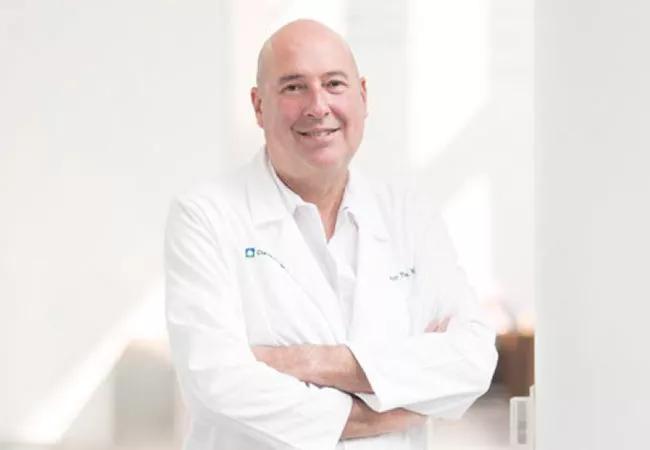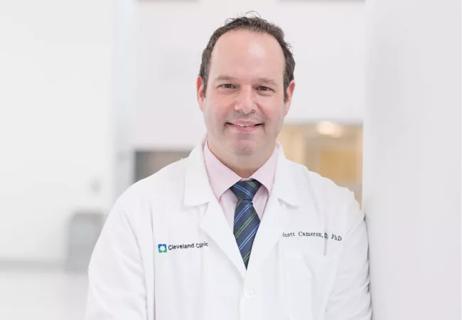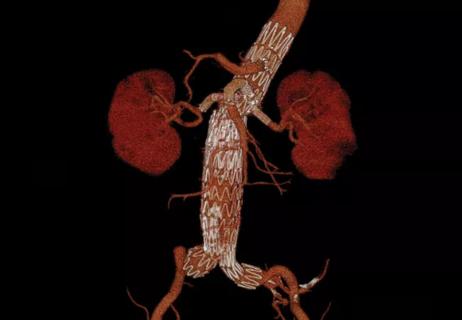Pioneering U.K. vascular surgeon joins Cleveland Clinic

When prominent U.K. vascular surgeon Matthew Thompson, MD, joined Cleveland Clinic’s Department of Vascular Surgery in July, he brought a depth of clinical and research expertise in endovascular care with a fresh international perspective. As one of the founders of the British Society of Endovascular Therapy and recipient of the 2017 Lifetime Achievement Award from the Vascular Society for Great Britain and Ireland, Dr. Thompson has helped innovate new endovascular technologies for aortic disease and guided clinical trials and comparative international outcomes research. For much of his career, Dr. Thompson was a prominent figure at St. George’s Vascular Institute in London, where, starting in 2002, he helped grow a relatively small but established vascular unit into one of the world’s leading vascular surgery centers.
Advertisement
Cleveland Clinic is a non-profit academic medical center. Advertising on our site helps support our mission. We do not endorse non-Cleveland Clinic products or services. Policy
Consult QD caught up with Dr. Thompson to discuss his career and international perspective on approaches to vascular surgery.
Q: Endovascular treatments have been rapidly adopted over the course of your roughly 30-year career. Can you share some insights into how this came about and your role in it?
A: I was an early believer that endovascular therapy could be done safely and would offer substantial advantages to many patients over open surgery. In 1994, I helped design an endograft for repair of abdominal aortic aneurysms that my colleagues and I used until commercial grafts became widely available.
All change involves resistance, and there was a lot at first. Innovation can only take you so far; you must also prove its advantages. I helped guide clinical investigations in the field, including the IMPROVE, ETTAA and VIRTUE studies assessing endovascular interventions for aortic aneurysms.
Q: You are currently working with industry in the medical devices space. Can you speak to the topic of cooperation between industry and clinicians?
A: As the chief medical officer of a medical device company, I believe that fostering collaboration between industry, academia and clinical medicine is the most efficient strategy for moving the surgical field in directions that optimize outcomes.
Q: Healthcare service delivery has been another major focus of your research, correct?
A: Yes, that’s another critical component for improving patient care. Along with my colleagues, I did a lot of research on the relationships between patient outcomes and caseloads — both institutional and for individual surgeons — in vascular surgery. We found strong evidence that greater caseloads lead to better outcomes. Armed with that knowledge, we helped organize important service reconfigurations in the United Kingdom, resulting in the centralization of vascular surgery at expert institutions, first in London and then throughout England.
Advertisement
Another issue in healthcare delivery I’ve been particularly interested in is international differences in medical practices. Understanding this can help standardize and improve health outcomes worldwide. A formative event for me was being awarded the Moynihan Travelling Fellowship, which funds a period of work abroad in a surgical unit. My experience in Australia gave me a lifelong appreciation of the value of seeing a healthcare system beyond one’s own.
I have been involved in several international research projects comparing practices and outcomes. One of our most interesting findings centered on aneurysm care in the U.K. versus the U.S., including both the treatment of ruptured aneurysms and the threshold for treating nonruptured aneurysms. We found that patients in the U.S. appeared to have better outcomes with ruptured aneurysms due to the increased number of patients offered intervention. The results were interesting and will influence practice in the U.K. [Editor’s note: See key references here and here.]
Q: In your time at Cleveland Clinic, have you noticed differences between the U.S. and U.K. systems that may not show up in formal research?
A: The most obvious surround the different systems and organization of healthcare coverage. Although the variety and spectrum of services available aren’t that different in the two countries, one system is largely nationalized whilst the other is more insurance-based. Although it is very difficult to generalize, I think the British system places more emphasis on the evidence that drives maximal cost-effectiveness, whereas the U.S. system encourages a more individual and patient-centric discussion.
Advertisement
Additionally, although I’d visited Cleveland Clinic before to give lectures and knew many of the staff already, it has been a pleasure to work here. The facilities are second to none, and all the modern treatments are at one’s fingertips, given the long history of innovation. I can’t speak highly enough about Cleveland Clinic’s culture and extremely collaborative environment.
Advertisement
Advertisement

Further acute testing not needed if ECG and high-sensitivity troponin are negative

Scott Cameron, MD, PhD, also brings wide-ranging research interests to bear

AHA statement is first comprehensive document on perioperative stroke reduction

Recognition reflects prioritization of long-term patient outcomes

Recommendations help distinguish exercise-induced remodeling from pathology

JACC review highlights factors unique to women, ways to tailor management

Pushing the envelope in ablation of atrial fibrillation, ventricular tachycardia

Study is the specialty’s first to quantify lack of women authors, committee members